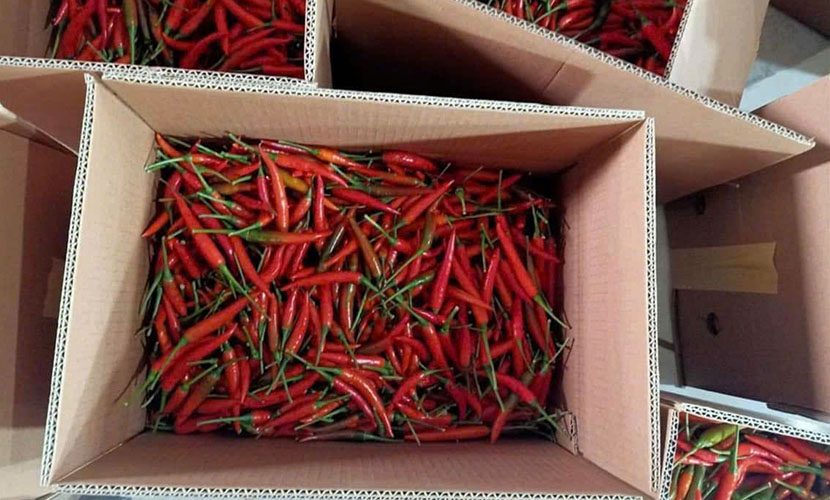
Since 2018, Cao Bang province has partnered with farmers in highland communes to cultivate chili. This initiative has opened a new path for agricultural production based on a value chain model. Vietnam’s chili exports have provided farmers with a stable income.
Lung Nam commune in Ha Quang district located nearly 20 kilometers from the district center. The commune is one of the limestone mountainous areas with arid soil. Previously, local people mainly grew corn and peanuts, which yielded low and unstable incomes.

Vietnam’s chili exports
Since participating in the model of Vietnam’s chili exports, farmers have increased their income. Also, they have also accessed advanced cultivation techniques following organic agricultural practices.
Mr. Bang, one of the first households to join the chili farming model in Lung Nam, shared: “At first, we did not believe that Vietnamese chili peppers could change our lives. However, with experts’ guidance, I realized chili was easy to grow and had stable selling prices. Now, my family earns tens of millions of VND each year from growing chili, much more than from corn.”
Currently, there are nearly 60 hectares of chili that are in partnership with export enterprises. The total yield reaches nearly 500 tons of fresh chili annually. With a stable selling price of 20,000 VND per kilogram, many households can earn around 40 million VND per year.
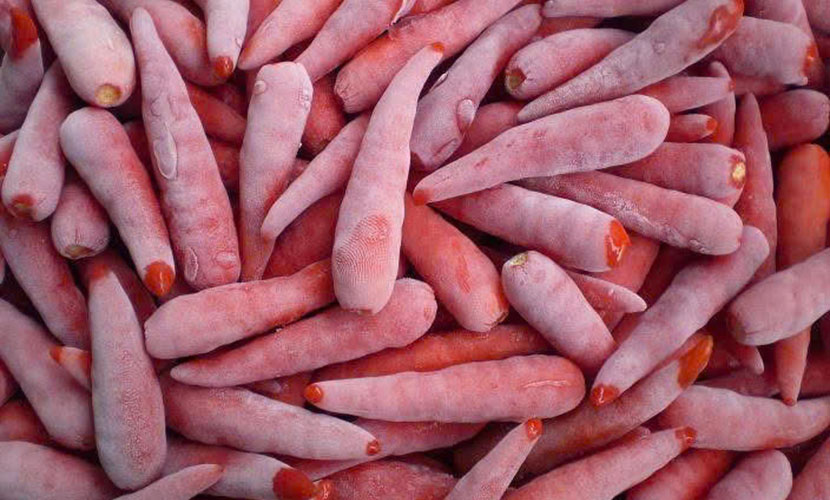
Vietnam’s frozen chili
According to Mr. Tho, Chairman of the Lung Nam Commune, this year’s chili crop expanded to 50 hectares. It was double the previous year. However, due to drought, only 13 hectares have been planted so far. After recent rains, people are hurrying to plant the remaining area.
Beyond income, chili cultivation is helping farmers shift crop structures to better adapt to climate change. Vietnam’s chili exports are drought-resistant and low in pests. In addition, they are easy to care for and suitable to the highland climate. Especially, they have met food safety standards, which have increased farmers’ awareness and farming skills.
The cooperation has followed the “4-party linkage” approach: farmers, the government, scientists, and enterprises. In which, enterprises provides seeds, organic fertilizers, and and technical guidance. Additionally, they also commit to purchasing all Vietnam’s fresh chili from farmers.
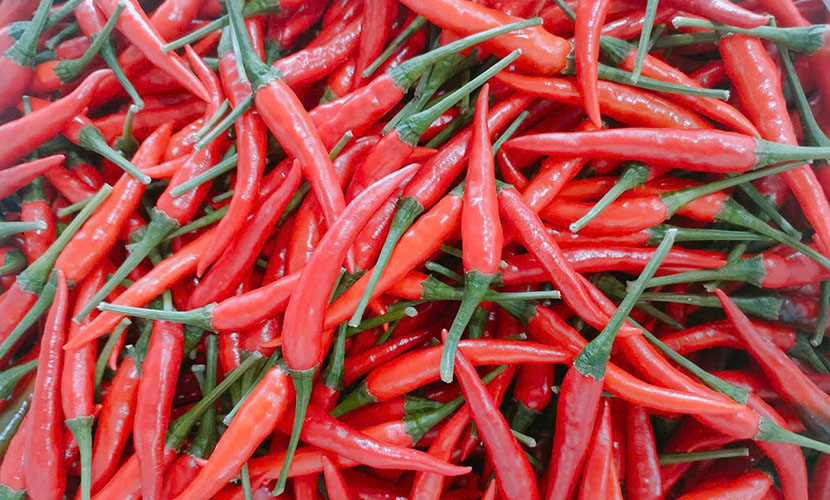
Vietnam’s fresh chili
Mr. Kim, a representative from the partnered company, shared: “We work with local authorities to prioritize underdeveloped and ethnic minority areas for project implementation. Our mission is to help people earn sustainable incomes from native crops. Bird’s eye chili is a high-value spice crop and is suitable to the mountainous climate, making it very promising.”
In Nuoc Hai Town (Hoa An District), more than five hectares of chili have started to yield harvests. Ms. Thiem, a farmer, said her family has grown two chili crops, with over 1,000 m² planted each year. Her family can earn a stable income of 25–30 million VND each year.
“The company provides detailed guidance, supplies seeds, and secures product output, so we feel confident in producing. If the weather is favorable next year, I plan to expand our growing area,” she said.
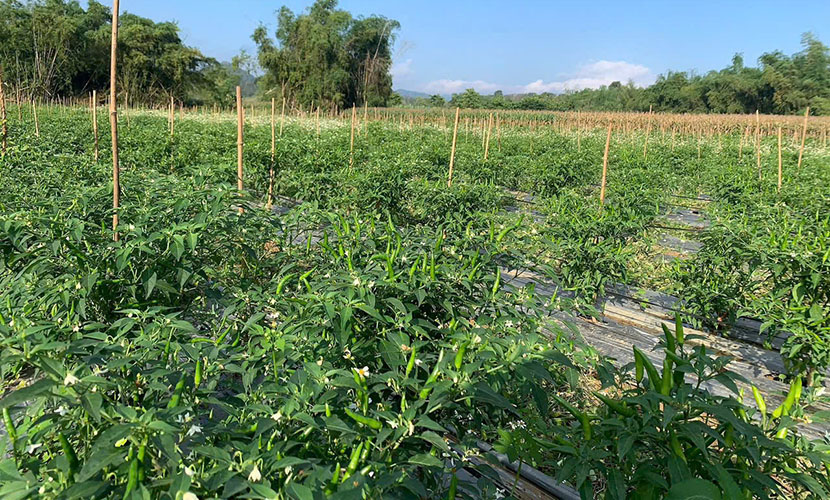
Vietnam’s chili farm
From an initial model of just a few hectares, Cao Bang province now cultivates nearly 100 hectares of Vietnamese organic chili through linked production. Ha Quang district alone accounts for nearly 60% of this area. Based on chili farming experience, several cooperatives have also formed. They have gradually created a sustainable production–consumption–export chain.
According to Mr. Hieu of the partnered company, chili farming is not simply a crop conversion. Also, it represents a shift in agricultural production mindset. Farmers are moving away from traditional methods and embracing organic practices, using bio-fertilizers and reducing harmful chemicals.
“Bird’s eye chili is easy to grow and quick to harvest, yet delivers high economic value. The average yield is estimated at 20–25 tons/hectare, with revenue reaching over 360 million VND/hectare per season,” Mr. Hieu affirmed.
Ca Tieng Hamlet in Noi Thon Commune, Ha Quang District, was the first highland area in the district to grow chili. From just a few thousand square meters initially, the commune expanded to 4.5 hectares in 2024. However, due to nearly four months of drought, the 2025 crop started late.
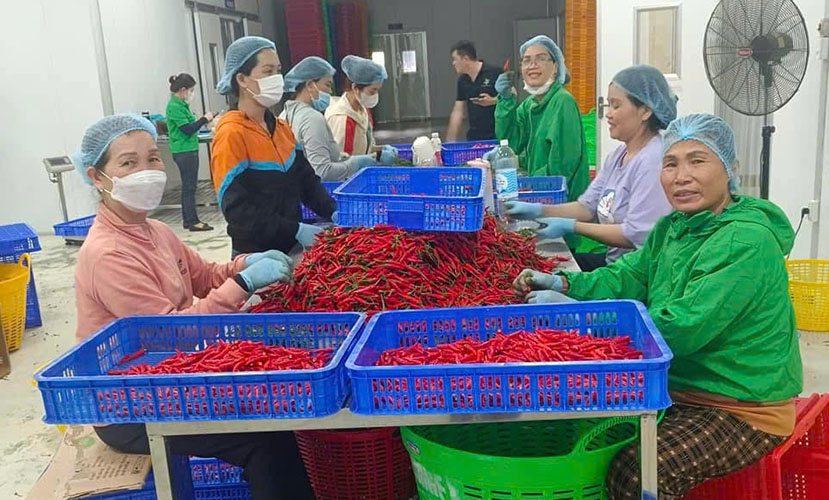
Vietnamese chili factory
According to Mr. Quan, Chairman of the Noi Thon Commune, the linked organic chili production model is a promising economic development strategy. It helps increase agricultural value and household incomes. In the future, the commune plans to expand the model to other villages with suitable growing conditions.
A notable success of this value chain production linkage is that local authorities have committed to supporting farmers at every stage. They support from model development and technical guidance to facilitating access to loans through policy banks or production development funds.
From land where only low-yield crops like corn and peanuts, farmers have transitioned to cultivating bird’s eye chili with significantly higher economic returns. The joint efforts of businesses, authorities, and farmers have been the key to the success of the export-oriented chili farming model.
Vietnamese source: https://nongnghiephuuco.vn/trong-ot-xuat-khau-mo-ra-co-hoi-cho-nong-dan-lam-giau-6439.html
